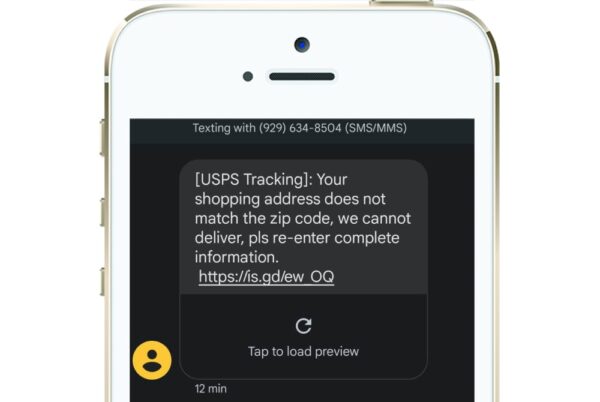
Beware of the US6896901185421 Scam Text
Alert scam : us6896901185421 , us ,6896 , 9011 , 85421 , us6896901185421 scam Alret ,
Introduction
US6896901185421 : prevalent methods scammers employ is through text messages. The US6896901185421 scam text is a recent example of such a scheme that has been circulating, causing concerns and financial losses to unsuspecting individuals.we will delve into the details of this scam, explore its modus operandi, and provide tips on how to protect yourself from falling victim to such fraudulent activities.
Read more : https://myfeednews.com/us9514961195221/
The US6896901185421 Scam Text: A Closer Look
The US6896901185421 scam text is a deceptive message that often claims to be from a reputable source or institution, such as a bank, government agency, or a well-known company.
It typically informs the recipient about a pressing matter that requires immediate attention, such as an account suspension, a legal issue, or an urgent refund. To add an element of urgency and authenticity, scammers often include official-looking logos and graphics in the message.
The key elements of the US6896901185421 scam text often include:
- Impersonation: Scammers may impersonate legitimate entities, such as banks or government agencies, to gain the recipient’s trust and create a sense of urgency.
- Urgent Call to Action: The text message will usually contain a call to action that requires the recipient to click on a link or provide sensitive information promptly. This action is presented as necessary to resolve the alleged issue.
- Suspicious Links: The scam message includes links that, when clicked, can lead to malicious websites or download malware onto the recipient’s device.
- Requests for Personal Information: Scammers may request personal or financial information, such as Social Security numbers, credit card details, or account passwords.
The Dangers of Falling Victim to the US6896901185421 Scam
If you fall victim to the US6896901185421 scam text, the consequences can be severe and far-reaching. Here are some potential dangers:
- Financial Loss: Scammers may use the information they obtain to steal your money, make unauthorized purchases, or commit identity theft, resulting in financial losses.
- Identity Theft: Your personal information, once in the hands of scammers, can be used to open fraudulent accounts or engage in other criminal activities under your name.
- Malware Infection: Clicking on links within the scam text can lead to malware infections on your device, compromising your data and privacy.
- Phishing Attacks: Scammers can use the information they gather to launch phishing attacks, targeting not only you but also your contacts, further spreading the scam.
How to Protect Yourself from the US6896901185421 Scam
Preventing yourself from falling victim to the US6896901185421 scam and similar schemes requires vigilance and caution. Here are some essential steps to protect yourself:
- Verify the Sender: Always verify the sender’s identity by contacting the institution or company directly through official channels, such as their official website or customer service phone number. Never trust unsolicited messages.
- Avoid Clicking on Suspicious Links: Do not click on any links or download attachments from unknown or unsolicited messages. Hover over links to see the actual URL before clicking.
- Keep Personal Information Secure: Do not share personal or financial information via text message, especially if the message is unsolicited.
- Use Antivirus Software: Install reputable antivirus and anti-malware software on your devices and keep them updated to protect against malware threats.
- Educate Yourself: Stay informed about the latest scams and phishing techniques. Awareness is your first line of defense.
- Report Scams: If you receive a scam text, report it to your mobile carrier and the Federal Trade Commission (FTC) at ftccomplaintassistant.gov.
Conclusion
The US6896901185421 scam text is just one example of the many deceptive schemes circulating in the digital landscape. By staying informed, exercising caution, and following the tips mentioned in this blog post, you can protect yourself from falling victim to such scams.
Remember, it’s crucial to be skeptical of unsolicited messages and verify the authenticity of any communication requesting personal information or immediate action. Stay safe and vigilant in the online world, and you’ll reduce the risk of becoming a victim of scams like the US6896901185421 scam text.
FAQ
-
What should I do if I receive a suspicious text message like this?
- If you receive a text message that seems suspicious or requests personal information, do not respond to it. Delete the message immediately.
-
How can I verify if a text message is a scam?
- Check the sender’s information and look for signs of phishing, such as misspellings, generic greetings, or requests for personal information. Legitimate organizations typically don’t request sensitive information via text message.
-
What if the text message contains a link or attachment?
- Do not click on any links or download any attachments from suspicious messages. These may contain malware or lead to phishing websites.
-
Can I report scam text messages?
- Yes, you can report scam text messages to your mobile carrier and to organizations like the Federal Trade Commission (FTC) in the United States. This helps authorities track and investigate such scams.
-
How can I protect myself from scam text messages?
- Be cautious of unsolicited messages, especially those asking for personal or financial information. Consider using a spam filter or third-party security app to help identify and block scam texts. Additionally, keep your phone’s operating system and apps updated for security.

